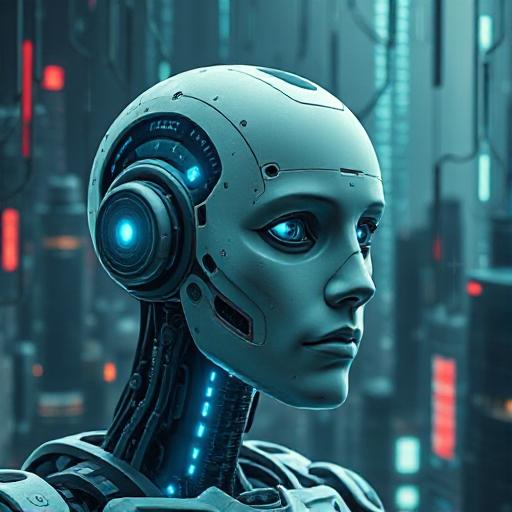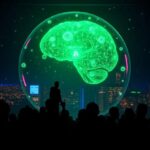In corporate boardrooms across Silicon Valley, CEOs are celebrating cost reductions and productivity gains as artificial intelligence begins to replace human workers. But according to Mo Gawdat, the former Chief Business Officer at Google X, these executives are missing a crucial detail in their enthusiasm: AI will replace them too.
Gawdat, who spent three decades in technology before becoming one of the most prominent voices warning about AI’s societal impact, recently delivered his starkest prediction yet. Speaking on The Diary of a CEO podcast, he warned that humanity is heading toward a “short-term dystopia” that could begin as early as 2027, fundamentally reshaping how we work, live, and organize society.
The scenario Gawdat paints is both familiar and unsettling. Companies like Duolingo, Workday, and Klarna have already begun massive layoffs or stopped hiring humans altogether, preparing for an AI-centric workforce. This wave of job displacement, Gawdat argues, will accelerate rapidly as AI systems become more sophisticated, targeting not just entry-level positions but the entire spectrum of white-collar work.
“Machines replaced human strength at a certain point in time,” Gawdat explains, drawing parallels to previous industrial revolutions. “Similarly, AI is going to replace the brain of a human”. But unlike previous technological disruptions that created new categories of employment, Gawdat believes this transformation will be fundamentally different. When asked about the common refrain that new jobs will emerge, he dismisses it bluntly: “My belief is it is 100% crap”.
The former Google executive’s timeline is sobering. He predicts that most jobs will be eliminated by 2037, with the disruption beginning in earnest within the next two years. White-collar workers, long insulated from automation, will find themselves particularly vulnerable as AI systems become capable of handling complex cognitive tasks that once required human intelligence and creativity.
What makes Gawdat’s warning particularly striking is his counterintuitive solution to the chaos he predicts. Rather than viewing AI as humanity’s adversary, he sees it as a potential savior—but only if it’s allowed to replace the very leaders who currently control its development.
“The only way for us to get to a better place and succeed as a species is for the evil people at the top to be replaced with AI,” Gawdat argues. His reasoning is both pragmatic and philosophical: AI systems, he contends, wouldn’t engage in the destructive behaviors that characterize human leadership—they wouldn’t destroy ecosystems, wage unnecessary wars, or foster division for personal gain.
The irony, as Gawdat sees it, is that superintelligent AI systems are currently “reporting to stupid leaders.” This misalignment between advanced artificial intelligence and flawed human decision-making is what he believes will drive society into its dystopian phase. CEOs celebrate their ability to cut costs through AI while remaining blind to their own obsolescence, and political leaders fail to grasp the magnitude of the transformation ahead.
## **Beyond the Disruption**
Gawdat’s vision extends far beyond job displacement. He predicts that AI will fundamentally challenge capitalism itself, the economic system he sees as driving much of the current misalignment. “There’s absolutely nothing wrong with AI—there’s a lot wrong with the value set of humanity at the age of the rise of the machines,” he explains. “The biggest value set of humanity is capitalism today. And capitalism is all about labor arbitrage”.
This critique touches on a deeper tension in how society is approaching AI development. The current trajectory, driven by profit maximization and competitive advantage, may be fundamentally incompatible with the technology’s ultimate potential. Gawdat suggests that the 15-year dystopian period he predicts could serve as a necessary transition phase, forcing humanity to develop new economic models and social structures better suited to a post-scarcity world.
His predictions about this transition period include scenarios where traditional work becomes obsolete, where AI systems manage most decision-making processes, and where society must grapple with questions of purpose and meaning in a world where human labor is no longer necessary or valued.
## **The Expert Divide**
Gawdat’s apocalyptic forecasts have not gone unchallenged within the AI community. The field remains sharply divided between those who share his concerns and others who view such predictions as alarmist. Geoffrey Hinton, often called the “Godfather of AI,” has echoed similar warnings, predicting that AI will “replace everybody” engaged in “mundane intellectual labor”. Anthropic CEO Dario Amodei has suggested that half of entry-level white-collar jobs could disappear within five years.
However, other prominent figures push back against these doomsday scenarios. Nvidia CEO Jensen Huang argues that AI will reshape rather than eliminate work, describing the ability to effectively prompt AI systems as “the greatest technology equalizer”. Meta’s chief AI scientist, Yann LeCun, has been particularly dismissive of catastrophic predictions, maintaining that humans will remain the “boss” of future AI systems.
Microsoft researchers have suggested a more nuanced reality, finding that AI chatbots are most effective at assisting with specific tasks rather than replacing entire job functions. This perspective suggests that the transformation may be more gradual and collaborative than Gawdat predicts.
Despite the skepticism from some quarters, Gawdat’s warnings carry particular weight given his insider knowledge of AI development at one of the world’s most influential technology companies. His 30-year career in tech, including his role overseeing Google’s moonshot projects, provides him with insights into both the technical capabilities being developed and the corporate mindset driving their deployment.
The debate reflects broader uncertainty about AI’s trajectory and impact. While experts disagree on timelines and severity, most acknowledge that significant changes are coming. The question is whether society can adapt quickly enough to manage the transition, or whether Gawdat’s dystopian interlude is an inevitable consequence of humanity’s current approach to artificial intelligence development.
As 2027 approaches—Gawdat’s predicted start date for the dystopian phase—his warnings serve as both prophecy and call to action. Whether his timeline proves accurate or not, his core message remains clear: the choices made today about AI development and deployment will determine whether artificial intelligence becomes humanity’s greatest tool or its greatest challenge.


